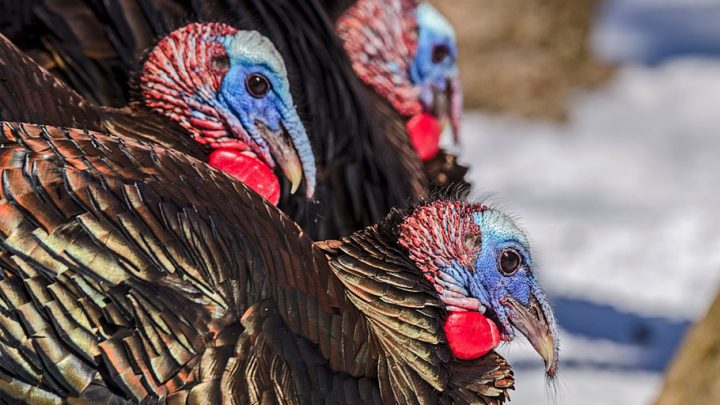Where did the domestic turkey come from?

Domestic turkeys come from the Wild Turkey (Meleagris gallopavo), a species that is native only to the Americas. In the 1500s, Spanish traders brought some that had been domesticated by indigenous Americans to Europe and Asia. The bird reportedly got its common name because it reached European tables through shipping routes that passed through Turkey. On a continent where fine dining still included eating storks, herons, and bustards, the meaty, succulent turkey was a sensation.
Later on, when English settlers came to America, they were amazed to find the same birds running wild and free, and tasting really good thanks to their natural diet of chestnuts, beechnuts, walnuts, and other native mast. That is probably one of the reasons Ben Franklin wanted the turkey to serve as our national emblem—it’s a beautiful, genuinely American bird that tastes wonderful and had enormous economic value for the colonists.
The Wild Turkey is one of just two species of turkey in the world. The other is the Ocellated Turkey (Meleagris ocellata) of Mexico and Central America. This turkey has iridescent plumage of blue, green, and bronze, and a featherless powder-blue head speckled with red and orange fleshy nodules. Males possess a unique cap-like crown that enlarges during breeding season. They make a whistling noise instead of the clucks and gobbles of the Wild Turkey. Read more at our Wild Turkey page.

All About Birds
is a free resource
Available for everyone,
funded by donors like you
American Kestrel by Blair Dudeck / Macaulay Library
